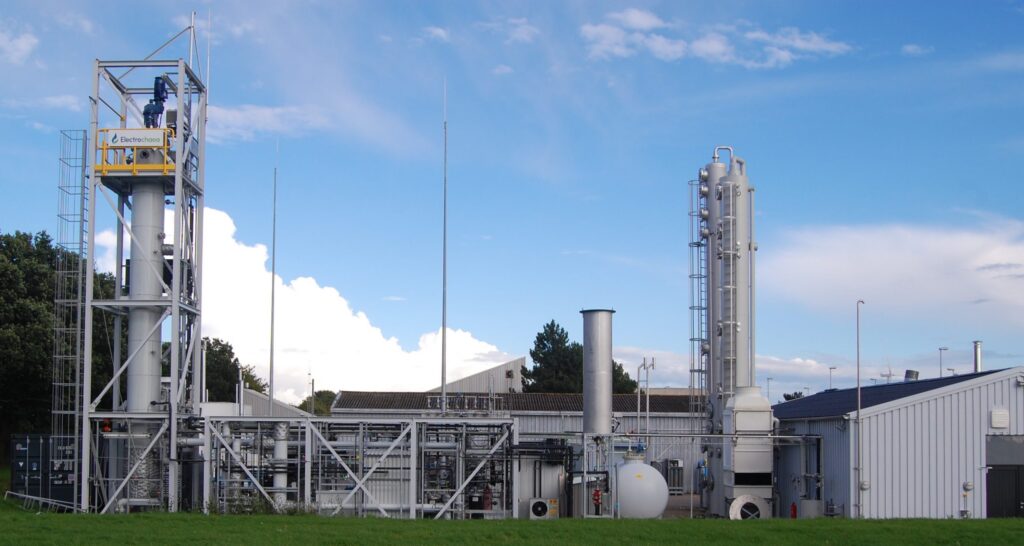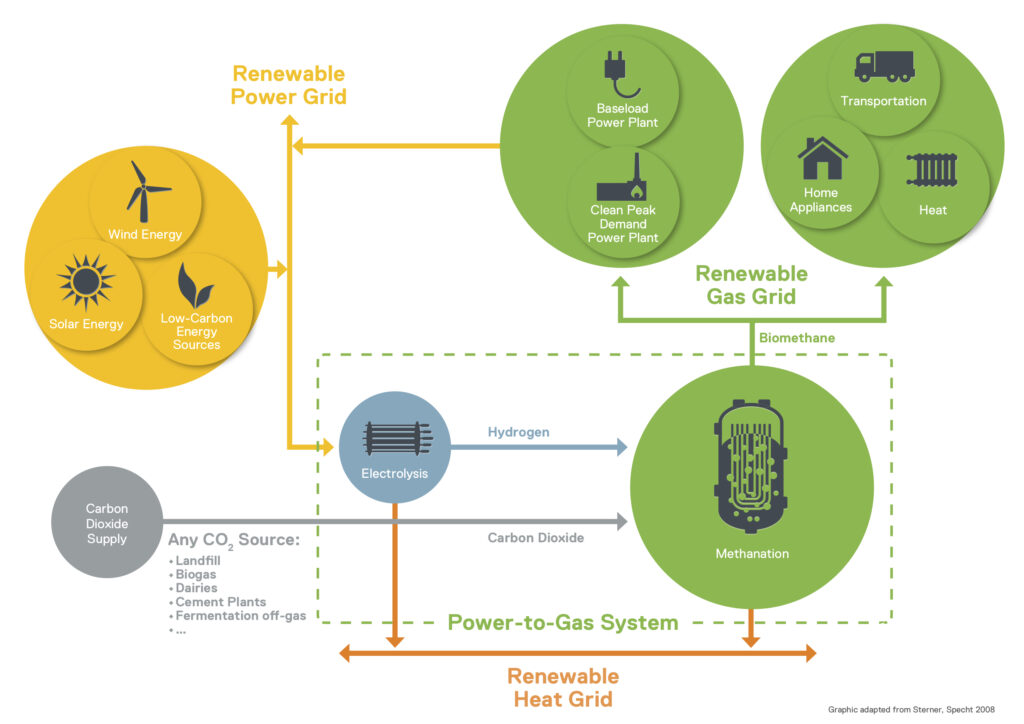Introduction: What is Power-to-Gas?
As the world turns to renewable sources like wind and solar to meet its energy demand, experts are confronted to one big escalating problem: how to balance supply and demand in an electricity grid whose power sources naturally fluctuate. While some days offer ample amount of wind and sunshine, others come up short. How can we harness this clean energy and still balance the electricity grid? The solution for long-term and large-scale energy storage: Power-to-Gas.
Power-to-Gas is a technology designed to integrate renewable power in different gas applications. The first step in the Power-to-Gas process is the splitting of water into hydrogen and oxygen through excess renewable energy from wind and solar. This is done through a chemical process known as electrolysis. In an additional step, the hydrogen can be catalytically reacted with carbon dioxide to yield methane, a process also known as Power-to-Methane.
Electrochaea’s Power-to-Methane Technology: How Does it Work?
Electrochaea has developed an industrial-scale carbon utilization solution that converts renewable electricity and carbon dioxide (CO2) into grid-quality renewable gas that can replace any use of fossil natural gas. This power-to-methane technology, called biomethanation, takes hydrogen (H2) produced using renewable power, and combines it with CO2 to produce methane (CH4), effectively storing the renewable electrical energy in the chemical bonds of the methane. This renewable methane is fully compatible with the currently existing natural gas infrastructure. It can be injected into existing natural gas pipelines and stored for days, weeks or months. It can also be transported geographically for use elsewhere or alternatively be converted into bio-LNG.

Overall, biomethanation minimizes future installed capacity, maintains security of supply by adding dispatchable but renewable electricity sources, and optimizes the use of curtailed electricity. As shown in Figure 2, biomethanation enables sector coupling and CO2-neutral energy supply. It plays a central role serving as a hub for long-term energy storage, electricity, heat, industry, and transport. It allows deeper decarbonization by including sectors like heat and transport and allows the reutilization of CO2into renewable natural gas. The core of Electrochaea’s system is a selectively evolved microorganism – a methanogenic archaea– that excels through unprecedented catalytic ability and industrial robustness.

Archaea: What are they exactly?
Archaea are 3.5 billion years old single-celled organisms (Fig. 3) representing one of three domains of all living organisms, alongside bacteria and eukaryotes. Electrochaea’s technology uses selectively developed methanogenic archaea; these archaea know how to do only one thing, but they do it particularly well. They produce methane from hydrogen and CO2 under anaerobic conditions by catalyzing the reaction CO2 + 4 H2 CH4 + 2 H2O. Additionally, they do so with a carbon-to-methane efficiency of > 98%. In the absence of either hydrogen or CO2, the archaea simply remain in “stand-by” mode – this can last for hours, days or months without affecting the microorganisms. Therefore, Electrochaea’s biomethanation system has the ability to be turned on and off rapidly, and to be available in ‘ready’ mode at low cost.

Energy Islands: How Can They Benefit from Power-to-Gas Technologies?
Geographical islands are faced with many energy challenges due to their specific location and climate conditions. Fuel import dependency, high electricity costs, limitation on energy production and energy interconnections, and imbalances on all time scales due to tourism are all good examples. Predicting, controlling, and managing intermittent energy sourcing to highly variable load profiles can help address those barriers. Additionally, the integration of energy storage solutions can also help by enablinggreater share of renewable energy penetration and ensuring grid stability and resilience.
Therefore, Power-to-Gas can represent a solution to those barriers for self-contained communities, such as island communities, by largely enabling closed material and energy cycles.
Ultimately, a power-to-gas system offers benefits towards complete electricity independence for island communities. The electricity generation facilities and the power-to-gas system can be dimensioned so that all electricity demand, including seasonal variations, can always be met through local production. This can be done either in primary generation facilities (wind, PV, biomass) or by re-electrification of stored renewable gas into green electricity. Without power-to-gas, only the electricity and heat sectors can be decarbonized by using renewable energy and short-to-mid-term storage solutions.
Micheál Ó Móráin (Údarás na Gaeltachta)
